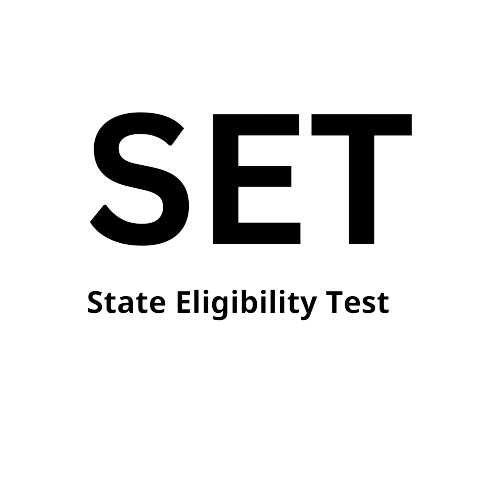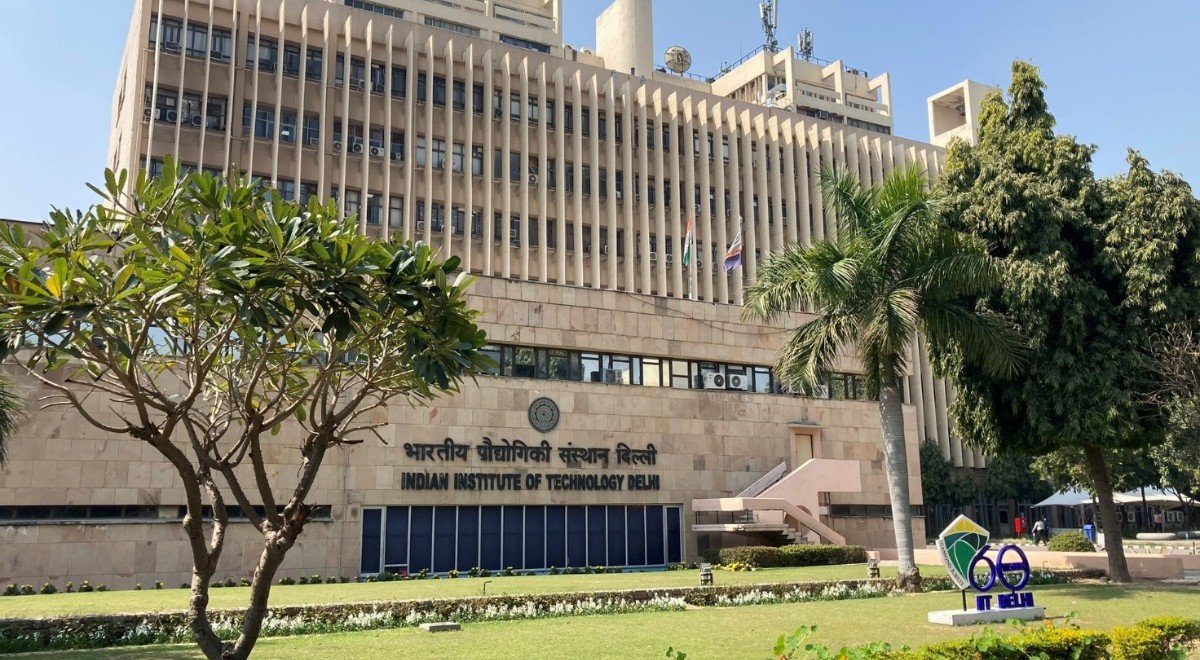Table of Contents
GMAT Preparation
Getting ready for the GMAT isn’t as hard as people make it out to be. All you need is a clear plan of action and a focus. You can study on your own or join a coaching centre. Both of these ways work fine, it just depends on what you want to do most. In this article, we’ll tell you how to fully prepare for the GMAT 2023.
To choose the best way to prepare for the GMAT, you should first look at your criteria and make a decision based on those. You need good GMAT books and resources, study materials, motivation, and self-discipline to study on your own effectively. If you don’t have a lot of time and you need professional help to give you an edge on the GMAT exam, the best thing to do is to join a GMAT coaching centre.
The 10 best ways to study for the GMAT
If you’re going to take the GMAT in 2023, you can look over these top 10 tips for getting ready.
1. Study the parts of the test.
Before you make a plan to study, you should know how the GMAT test is set up.
There are four parts to the GMAT:
- Analytical Writing Assessment (AWA section): This test looks at how well you can think critically and explain your ideas.
- The Integrated Reasoning (IR) section: Tests how well the test-taker can analyze data and figure out what it means when it’s shown in different ways.
- Quantitative Reasoning (the “Quant” section): This tests a person’s ability to solve numerical problems, think mathematically, and read graphs.
- Verbal Reasoning (Verbal section): This test looks at how well you can edit, how well you understand what you read, and if you can make sense of written arguments.
2. Make a plan for studying before you start getting ready.
Having a study plan for the GMAT early on will help you make a clear path for preparing for the GMAT. Most business school students make an 8-week study plan that helps them learn the tips and tricks they need to reach their goals.
3. Select GMAT prep material
Find GMAT study materials online and in books. You can find a lot of GMAT study materials online to help you get ready for the test. You can also check out the official GMAT study materials. Choose the material that has a scoring method similar to the one used on the GMAT. Also, try to answer questions from past tests.
4. Work on what you’re not good at.
First, figure out where you are weak, and then practice regularly to improve those areas. In the sub-sections of each of the four sections, you can find out where you need to improve and focus all of your attention on getting better.
5. Don’t just ask one thing.
If you don’t finish each part of the exam, there will be a penalty. Also, your score will go down if you don’t answer a question. Don’t spend too much time on a single hard question. Instead, give each question only a certain amount of time. Don’t take more than 2.5 minutes to answer one question.
6. When preparing for the GMAT, pay attention to the time limit.
When you don’t have much time, speed is the most important thing to work on. Spend more time on the thing that takes up too much of your time. Like, if you take too long on the quantitative section, you should work on getting better at math. Do a GMAT practice test every day and you’ll get faster.
7. Use an elimination strategy
Don’t spend too much time on a question you don’t know how to answer. Don’t worry too much about getting the right answer. Whenever stuck with a tricky question just mark the one which is nearest to the correct answer and move on to the next question.
8. Improve visual literacy while preparing for the GMAT
Learn to read charts, symbols, tables, and graphs to increase your efficiency. GMAT exams have visual data questions, so, learning this skill will help you in better time management as well. This will help you in solving the GMAT Quant section.
9. Develop the right kind of skills
As it is a limited-time test, develop skills that will come in handy while giving the test. Find your weak area and work on it, so, it will not affect your performance on the entire exam.
10. Practice as much as you can
Practice more and more! As they say, practice makes a man perfect, you need to apply this while preparing for the exam and once you are complete with your preparation go for the free GMAT sample papers. It will help you in finding how well you are prepared for the test.
GMAT Study Material 2023
If you take the route of self-study to prepare for GMAT, there are the best books for GMAT preparation in 2022 along with study materials and GMAT study plans available to help you. GMAC has its own official study guide and free software.
Refer to the following GMAT guides and books to help create a study plan –
- The Official Guide for GMAT Review, 2022 – This exam guide includes more than 900 questions from past GMAT exams, a diagnostic section to help you assess where to focus your efforts, and invaluable test-taking tips and strategies to help you get the score you want.
- Free GMAT Prep Software – this software includes ninety free questions – 30 Quantitative, 45 Verbal, and 15 Integrated Reasoning – with answers and explanations, tools to create your own practice question set, two full-length practice tests with answers, etc.
- Manhattan GMAT Strategy Guides – This set includes: GMAT Roadmap; Fractions, Decimals, & Percents; Algebra; Word Problems; Geometry; Number Properties; Critical Reasoning; Reading Comprehension; Sentence Correction; Integrated Reasoning & Essay.
- Kaplan GMAT 800 – Advanced Prep for Advanced Students – Tips for test-taking, proven strategies for getting a perfect score of 800, and focused guidelines for tackling each question type all combine for the ideal preparation tool for the most ambitious student.
Section-wise preparation tips for GMAT
Learn how to prepare for the GMAT and go through the GMAT exam preparation tips section-wise. Learn about the GMAT exam pattern and GMAT syllabus and plan your routine strategically covering topic by topic. Making slow progress but continuous efforts will help you achieve a GMAT score of 700 or above.
GMAT Preparation Tips: Integrated Reasoning section
This section includes 12 questions with a time of 30 minutes. Ideally, a test taker should complete the section in 25 minutes and keep the last 5 minutes for revising and also keep an eye on unsolved questions if any
Make sure to cover every topic whether, graphics interpretation or table analysis, so, you can attempt the GMAT test confidently
Go through the books and study material to prepare for the test
To be successful in business, you’ll need to analyze information from many different sources, come up with plans, and make decisions based on what you’ve learned. The Integrated Reasoning section of the GMAT is meant to test your ability to evaluate information presented in different ways and from different sources. These are skills you already have and need to succeed in today’s world, which is full of information.
Time: 30 minutes
Format: 12 questions
Table Analysis, Graphic Analysis, Two-Part Analysis, and Multi-Source Reasoning are some of the tests.
The Integrated Reasoning section has four types of questions that ask you to look at the information in different ways and from different sources.
- Graphics Interpretation: Figure out what the graph or picture is trying to say and choose the right answer from a list.
- Two-Part Analysis: To solve a problem with a two-part solution, choose one answer from each column. There will be a column for each part in a table with the possible answers.
- Table Analysis: Sort the table to put the information in order so you can see if certain conditions are met. For each question, there will be two statements with different answers. Choose one answer for each of the following.
- Multi-Source Reasoning: Click on the page to see different pieces of information and figure out which information you need to answer the question.
GMAT IR: Tests Skills
Analysis of information shown in pictures, words, and numbers
putting together information from different sources that is useful
Putting information in order to see connections and solve multiple, related problems
Putting together information from different sources to solve problems that are hard to solve on their own
Things you should know about GMAT IR question types
In the Integrated Reasoning section, there are questions from both the Quantitative Reasoning section and the Verbal Reasoning section. There is more than one answer to some of the questions.
All possible answers to one question are shown on the same screen.
Answer all parts of the question before moving on to the next one.
If you get all of the parts of a single question right, you will get credit. As there is no partial credit
After giving an answer, one cannot go back and change it.
Some questions might have a set of numbers or a picture. If you get a question wrong, it doesn’t mean you’ll get all the other questions wrong that follow the same pattern.
There may be numbers in the questions, but this is not a test of your math skills. There may be a basic online calculator available, but you don’t need it for this section.
These free downloads might be of interest to you.
GMAT IR Tips: How to Read Graphics
A candidate must answer questions that come with charts and graphs to pass a graphics interpretation question.
The candidate must pay close attention to the text.
Don’t lose track of the measurement units.
You need to learn how to find connections between the data that has been given to you.
Be careful about absolute increase/ decrease, percentage increase/ decrease, trends, correlation, etc.
Tips for the GMAT IR: Table Analysis
You can sort the data in this table by column to answer these questions. Answers will be a set of statements with two different answers, such as “Yes/No” or “True/False.”
Look at the table and the text to figure out what kind of information is being given.
Read the question carefully to find out what kind of data analysis is needed and what choice you need to make.
Check to see if the given condition is possible
Two-Part Analysis: A Tip for the GMAT IR
In these questions, there is a short story or problem, and you have to choose two answers that fit the information. The choices for answers will be related to each other in some way.
Carefully read through the information, which may be written, numerical, or a mix of the two. Even if you know a lot about the subject, make sure it doesn’t change how you answer. Also, only use the information given in the question.
Check to see what the question is really asking. Sometimes, there aren’t enough details in the response columns to help you figure out what you need to do.
Look over the options before choosing the right answer. Find out if the tasks depend on each other or can be done on their own. A few questions have two tasks that can be done separately. Instead, they may have one task that has two parts that depend on each other.
Make sure that the right answer for both columns is the same answer. There may be one answer choice that fits both columns.
Multi-source reasoning: GMAT IR.
In a Multi-Source Reasoning question, the information is given in the form of text, a table, or a graph on two or three different tabs. The question (MCQ, Yes/No, True/False, etc.) will be on the other half of the screen.
Look over the information quickly and then read the question. This will save you time because you’ll know where to find the information.
You can use the RC method of summing up the content.
You can summarise the information on your rough paper by putting it in two or three columns.
GMAT IR Tips: Guidelines
Here are some tips to help you do well on this new part of the GMAT:
- Sharpen your time management skills to make sure you attempt all the questions and sub-questions.
- In multi-source reasoning, writing notes on each tab will help you keep track of how much information there is.
- If the question is about a table, don’t spend a lot of time reading the first paragraph. Instead, go straight to the question and table because the table has everything you need.
- Read the first part of the two-part analysis questions very carefully.
- Before you start to figure out how to answer a question about interpreting a graphic, look at the answer choices in the menu.
- Check the value of each step on the axes of line and bar graphs to make sure your calculations are correct.
- Use the calculator you already have on your computer to get ready for the online calculator.
GMAT Preparation Tips: Quantitative section
This section includes 31 questions and a time limit of 62 minutes
Cover questions related to Data Sufficiency and Problem-solving while practicing
In an ideal situation, you should complete the questions in 55 minutes and keep the rest of the time to visit the unsolved questions and revision
Memorizing the mathematical formulas used in these topics will help in increasing the speed
Practice both easy and tricky questions to cover the entire GMAT syllabus
The GMAT’s Quantitative section tests how good you are at basic math. It checks how well a candidate knows the basic math concepts they learned in school and how well they can think quantitatively. In this section, you have to solve math problems, make sense of your thoughts by using math, and read graphs.
Even though you need to be good at math to answer the questions in the Quants section, you will learn math you need in high school. This article has tips on how to prepare for the GMAT’s quantitative section, so you can do a better job of getting ready for it.
Time for the test: 62 minutes
Format: 31 questions
Tests: Solving problems and Data sufficiency
There are two kinds of questions in the Quantitative part.
Problem-Solving and Problem-solving questions are standard 5-choice multiple-choice questions.
There is a question followed by two statements in a data sufficiency question. Your job is to decide if the statements give you enough information to answer the question. Problem-solving is usually a lot more complicated than these questions.
Skills Needed for the Math Part of the GMAT
Ability to think mathematically, solve mathematical problems, and read graphs
Understanding how to solve problems using basic math, algebra, and geometry
Taking a look at how much information is needed to solve math problems
Analyzing a quantitative problem
figuring out what information is important
To be able to tell when you have enough information to solve a problem.
Advice on How to Solve Problems
Problem-solving questions test your ability to solve math problems using logical and analytical thinking. Candidates need to figure out how to solve the problem and choose the right answer from the list.
Make it faster: During the test, check the screen timer often. If you can’t solve a problem, don’t spend too much time on it. Instead, move on to the next one. Try to get through the whole section.
Carefully read each and every question: Carefully read each question to understand the information given and what is being asked. Carefully read each sentence and turn the information into equations to solve the problem.
Use the board you can erase: Use the erasable notepad that will be given to you at the test centre. If you try to answer the questions on paper, you might be more likely to get the right answers and avoid making mistakes.
Look at the possible answers: Look at the choices for the answer before you give the answer. If you don’t, you might waste time trying to find an answer that isn’t in the choices.
Don’t spend too much time on one question. If a question is taking too long, move on to the next one. Check out the options, get rid of the ones you think are wrong, pick the best one, and move on to the next question.
How to Answer Questions About Enough Data
Data Sufficiency tests your ability to look at a quantitative problem, figure out which data is important, and figure out when there is enough data to solve the problem.
Check to see if the problem can take on a range of values or just one: You only need to decide if you have enough information.
Don’t jump to conclusions based on geometric shapes: The figures don’t have to be drawn to scale.
These free downloads might be of interest to you.
Important Topics for GMAT Math Prep
To do well on the GMAT Quantitative Reasoning section, you need to know how to do basic math. Some of the places you need to focus on and learn more about in math are
Arithmetic is the study of basic math, such as fractions, statistics, integers, probability, powers, and roots.
Algebra teaches how to solve different kinds of equations and covers topics like variables and functions.
Geometry is the study of the properties of shapes like triangles, circles, squares, solids, and cylinders.
Word problems involve using geometric principles, combining arithmetic and algebraic
GMAT Quantitative Tips
Before you take the GMAT, you should know math formulas.
Make sure to make a list of formulas as you prepare. These formulas must be changed every day.
Use the scraps of paper you have. You can use it to draw pictures, figure out math problems, and cross out the wrong answers.
Since you won’t need the keyboard for the quantitative part, move it to the side so you have more room on your desk to write on your rough paper.
Trigonometry and calculus, which are more complicated, are not tested on the GMAT. To do well, you only need to know how to do algebra, geometry, and math from school.
Don’t answer geometry questions based on what you can see. People often make the mistake of thinking that two lines must meet at a right angle, even though this is never said in the text.
At least 30 seconds should be spent looking at the diagrams. From the pictures, we can learn a lot.
In the same way, look over the graphs and tables for 30 seconds. Graph problems are meant to test how well you can read and use graphs and tables. They do not require you to do a lot of math.
Bar graphs and line charts, on the other hand, can be judged by what they look like. The people making these questions won’t use any tricks with how they look.
Learn how to do things in reverse. If you don’t know how to answer a question, you can pick one of the answers and work backward to see if it makes sense.
Don’t rush through the easy questions and make careless mistakes.
Get rid of the options that don’t make sense.
Sources for GMAT Math Prep
Even if you have a background in engineering, you shouldn’t be too sure of yourself in this part. You never know what kind of questions the test will have. It’s much better to study for each part. We’ve given you a list of basic books you need to read to do well in this section:
GMAT Official Guide: This official GMAT guide is the most important thing I’ve ever read. It has questions that have actually been asked on the GMAT. You have to learn everything in this book.
Guides to the Manhattan GMAT: Manhattan GMAT books have a lot of information and are a must-have for anyone who wants to take the GMAT.
Advanced Quant on the Manhattan GMAT: Don’t be afraid to read this book. It has some really good practice questions. After you finish the base books, you must also solve this one.
CAT Formulas: You must write down formulas from CAT books in short notes. Since the CAT quantitative section is harder than the GMAT section, it will help students to be able to easily answer GMAT questions.
GMAT Preparation Tips: Verbal section
A total of 65 minutes are allotted for the Verbal Section of the GMAT test during which you need to solve 36 questions
This section tests your English language skills and usage. For the Verbal section enhance your grammar with grammar books and read newspaper editorials
The section will have questions from various topics like reading passages, critical reasoning and idioms, synonyms-antonyms, sentence correction, and subject-verb agreement
Cover all these topics while preparing and using different guides books as this section will also test your reasoning and analytical skills
The verbal section of the GMAT tests a person’s ability to read and understand written material, reason and evaluate arguments, and correct written material to express ideas clearly in standard written English. The Verbal section of the GMAT is hard to pass. Not many people get a perfect score of 51 on a test. In this article, we’ll show you how to answer the Verbal questions on the GMAT correctly.
Time: 65 minutes
Format: 36 questions
Topic: Reading comprehension, critical thinking, and sentence correction are the tests.
Skills Are Tested on the GMAT Verbal Section
Understanding statements
Figuring out how the ideas in the readings make sense
Taking facts and statements and coming to a conclusion
Understanding how numerical ideas are presented in written material and how they change over time
Reading Comprehension Questions on the GMAT Verbal Section
Up to 350 words are allowed in Reading Comprehension passages. Since the Reading Comprehension section has passages from many different subjects, the student may already know some of the information.
Tips for the Reading Comprehension Part of the GMAT Verbal Test
Reading comprehension passages usually have one of three types of topics. The way you answer each question will be a little bit different.
Science passages, like those about biology and chemistry, are factual and easy to understand.
History and geography passages, for example, will have a lot of open-ended questions, so you should take your time reading them.
Business-related passages are hard because they have complicated structures and may ask you to figure out the author’s mood and thoughts.
When you answer a factual question, keep in mind that they are the easiest to answer.
When you are asked to describe the tone of a passage, the tone is more likely to be positive or neutral than negative. Most likely, it will be neutral in a science passage.
As you read, pay more attention to the main idea, the tone of the author, and the topics of each paragraph than to the specific details.
Before you read the passage, read the first question. You’ll know what to pay more attention to.
When answering a fact question, read both the passage that gives the information and a few lines before it very carefully.
You need to learn how to summarise paragraphs and pick out the main idea.
Critical Reasoning Questions on the GMAT Verbal Section
Critical Reasoning questions are meant to see how good your reasoning skills are when it comes to making arguments, judging arguments, and coming up with a plan of action or judging it.
Critical Thinking Tips for the GMAT Verbal Section
You need to know how an argument is put together.
Before you read the argument, read the question so you know what kind of question you have to answer.
For questions that say “strengthen the argument” or “weaken the argument,” figure out what kind of reasoning the author uses and choose an answer that helps or hurts that kind of reasoning.
If a question asks you to draw a conclusion, choose an answer that tells you what the author’s main point was.
The answer must make sense in light of what was said in the passage. Don’t pick an answer because you think it’s right.
Try to figure out what the right answer is before you look at the choices. This will help you decide which answer is the best.
Read all the possible answers. Get rid of the ones you know are wrong, and then look at the ones that are left to find the one with the most correct answer.
Sentence Correction Questions on the GMAT Verbal Test
When you get a sentence correction question, you have to choose which of the five options best shows an idea or relationship. You will need to know the style and grammar rules of standard English to answer the questions.
Tips for the GMAT Verbal Section: How to Correct Sentences
These four things will be true about the right answer:
- No grammar errors
- Correct sentence structure
- No language mistakes
- No changes to the meaning of the sentence
Watch out for a lot of mistakes. People often find one mistake in a sentence without noticing that there are other mistakes in the sentence.
Look at the choices for the answer. Seeing how the choices differ from each other is a good way to figure out what mistakes might be in the underlined text.
Say each choice out loud in your head to see if it sounds right.
Preparing for the GMAT Verbal
The verbal section of the GMAT is hard, and students need to prepare well for it. We’ve given you a list of resources you can use to prepare for the GMAT verbal section.
Strategy guides by Manhattan Prep for the GMAT: Make sure to read these books all the way through. Don’t skip any of the questions in these books. When you read the theory, try to take short notes. These books will give you a solid foundation.
GMAT Official Guide (GMAT OG): After you finish the Manhattan Prep GMAT Strategy Guides, you must solve GMAT OG. You can’t get away from this book. You must try to solve the GMAT OG at least twice before the main test.
GMAT Preparation Tips: Analytical Writing Assessment
A total of 30 minutes are allotted to the Analytical Writing Section
Try to wrap up the writing assignment in 25 minutes and spare the last 5 minutes for revising the written content
Develop a habit of reading and try to read topics from different areas
Read newspapers that will be of great help to prepare for the Writing section
Read articles that argue on relevant topics and also highlight examples
Try to remember important points in a topic and practice continuously, so, you can use them while writing
Practice writing on different topics and highlight argumentative points
Try to increase your speed, so, manage time efficiently
The Analytical Writing Assessment on the Graduate Management Aptitude Test (GMAT) helps business schools figure out how well a candidate can write. It is scored on a different scale than your 200-800 point score, from 0 to 6. Both people and computers grade essays and your final grade is based on the average of the two scores. Even though your GMAT AWA score doesn’t count toward your main GMAT score, it can be used as a tiebreaker if the B-School has to choose between two candidates with the same score. Some of the best business schools also have a GMAT AWA cut-off. At least 4.5 is always a good score on it.
Duration: 30 minutes
Format: 1 essay
Ability to break down an argument
The GMAT Analytical Writing Assessment tells you how to plan and write your essay in a clear way. Due to the limited time, it is hard to read all of the instructions. So, it’s best to learn these instructions before the GMAT Analytical Writing test. This will help you save time on the test. GMAT AWA tests a candidate’s ability to understand an argument and explain what they think.
Tips for GMAT AWA
To do well on the Analytical Writing Assessment, you need to do more than just look at GMAT AWA sample papers. You also need to follow these tips.
Keep it in order: Your essay needs to have a plan. There should be a clear beginning, middle, and end. Each paragraph should flow smoothly into the next one so that you can easily move from one idea to the next. Your written work and the way you think must make sense.
Find the good points and bad points of an argument: The Analytical Writing Assessment tests a candidate’s ability to think critically and explain his or her ideas. Within the time limit, analyze the reasoning behind a given argument and write a critique of that argument.
Learn about the possible essay questions: The more you practice, the better you will do on the AWA GMAT. You can improve your score by using the GMAT Official AWA Practice essay writing practice tool.
Prepare for Analytical Writing Assessment: Before you start your response, you should think about the argument and plan your response. Once you have your ideas in order, you can use your time so that you have time to go back and change your answer.
Ask these questions while putting together your answer:
- Can you come up with any other counter-examples?
- What shaky assumptions lie behind the way of thinking?
- What other evidence could make the case stronger?
- Does the answer sound like a discussion? Does it have a clear structure and full sentences?
Use examples and illustrations that are well thought out. Do not just list examples. Build up your ideas. Make your answer so that it sounds like a conversation. Your essay response should make sense and have full sentences, logical transitions, and examples that are introduced and developed in the right way.
Analysis of a Point of View
This type of question gives you a short argument that is similar to a statement in a critical thinking question. Your job is to write an essay that looks at the structure of the argument and says whether or not you think it makes sense. Think about the questions below:
- What’s the end of the story?
- How does the writer move from the evidence to the conclusion?
- How is the conclusion backed up by evidence?
- What other explanations could make the conclusion less strong?
- What kind of proof could help make the case stronger?
- Is the case convincing?
- How could it be better? Weaker?
5 Tips for the GMAT Analytical Writing Test
In the first part of the AWA GMAT, you have to type an original sample of analytical writing. Follow these tips to get the most out of your essay:
- Choose your side right away. There is no right answer to the questions, so don’t waste time trying to find it.
- Spend two to five minutes making a rough drawing of your ideas. Make sure your essay has a main point and that each paragraph has a topic sentence.
- Include an opening paragraph and an ending paragraph.
- Be specific in your evidence. Use what you already know.
- Leave a few minutes at the end of your essay to check for mistakes and fix them.
GMAT AWA: Points for Scoring
This is how the GMAT AWA essay is graded:
- A look at the problem
- Backs up ideas
- Organizes ideas to make sense
- Language control
You can practice writing an essay by looking at some AWA GMAT examples. An essay that is well-written should:
- Find and explain the main problems with the argument.
- Support the critique using significant supporting examples
- Be organized, and your answer should cover everything.
- Show that you know English well, including syntax, diction, and the rules of standard written English.
Template for the GMAT Analytical Writing Test
Once you know what makes a perfect essay, you can make a template.
- Intro: Point out the problems and write your thoughts, which you will talk about later.
- First Paragraph: Write the first critique of the argument and give an example to back up your point of view.
- Second Paragraph: Continue from the first paragraph and give an example to back up your point of view.
- Give a few questions about the argument in the third paragraph.
- In your conclusion, you should say that the argument is wrong and explain why. Also, briefly explain how this argument could have been better.
These preparation tips will help you understand how to improve your GMAT scores to get into better colleges. Getting a great score on the GMAT exam isn’t a difficult task, and just requires proper planning and preparation.
Read more
- Exam Date
- Eligibility Criteria
- Application Form
- Admit card
- Exam Centers
- Exam pattern
- Syllabus
- Result
- Counselling
- Book
- Cutoff
- Mock Test
- Preparation
Frequently Asked Questions About GMAT 2023 Preparation
Q. How do I take a free practice test for the GMAT?
Ans. There are many ways to prepare for the GMAT test online, but candidates can get free GMAT practice tests on the GMAC website (mba.com). They need to download the GMAT prep software, make an account, and get GMAT practice tests.
Q. Is it possible to get an 800 on the GMAT?
Ans. Getting an 800 on the GMAT is not easy at all, and not many people are able to do it. Only a small number of the almost 200,000 people who take the GMAT every year are able to get a perfect score. One can get a good score with consistent work and a good plan, but it is very hard to get a perfect score.
Q. Where can I get free GMAT study materials?
Ans. There are many places where you can get free GMAT study materials. Here are some places where you can get free GMAT study materials:
On the official GMAT website, you can find advice on how to study for the test.
Veritas Prep has free GMAT lessons and free tools that will help you study for the test.
Manhattan Prep has free online tools for the GMAT that are very helpful for people studying for the test.
Q. What skills does the GMAT test?
Ans. The GMAT tests different skills, like being able to think critically, analyze data, and use reasoning skills to come to conclusions. So, if you want to get into your dream B-school, you need to work on these skills to get a good score.
Q. Where can I find free practice tests for the GMAT?
Ans. GMAC’s free GMAT prep software gives candidates two full-length GMAT practice tests. Once you make an account, you can download the software and access both tests. Candidates also get a total of 90 free GMAT practice questions, 45 in the Verbal section, 30 in the Quantitative section, and 15 in the Integrated Reasoning section.
Q. When is the best time to take free GMAT practice tests?
Ans. Test takers should start taking free GMAT practice tests when they’ve done about half of their studying for the test. Also, once you’ve done all of your studying, you should take a free practice test every 3–4 days before the real test.
Q. Can I study on my own for the GMAT?
Ans. There are different ways to study for the GMAT, such as online courses, private tutoring, and in-person classes. Some candidates have trouble with timing or cost, so self-study can be a good choice for them.
Q. Am I allowed using a calculator on the GMAT?
Ans. Test takers are not allowed to bring their calculators. The test centers give candidates a simple calculator that can only be used for the Integrated Reasoning section. In the Quantitative section, candidates are also given markers and note boards to help them do the math.
Q. How do I take a practice GMAT test?
Ans. You can take the GMAT practice test whenever you want. Just make sure to do it the same way you’ll do the real test. If you plan to do the Writing section first, do the same thing on the practice tests. Don’t take more time, and finish the test all at once.
Q. How can I study at home for the GMAT?
Ans. You can find a lot of GMAT study material online, which you can use to start getting ready. Those who don’t want to go to coaching or tutoring can study at home and prepare for the GMAT test on their own. Make sure to come up with a good plan to prepare well. Also, after you are done studying, give practice tests. It’s better to know your weaknesses and work on them than to not.
Q. Is the GMAT test harder than the GRE?
Ans. The GMAT might be easy for people who like logic problems more than geometry problems since the GRE has more geometry problems. Also, the GMAT’s Quantitative section is harder than the GRE’s. The GRE’s verbal section can be hard for people who don’t speak English as their first language. On the GRE test, candidates can go back and forth, but on the GMAT, they can’t save their work and come back to each section.























